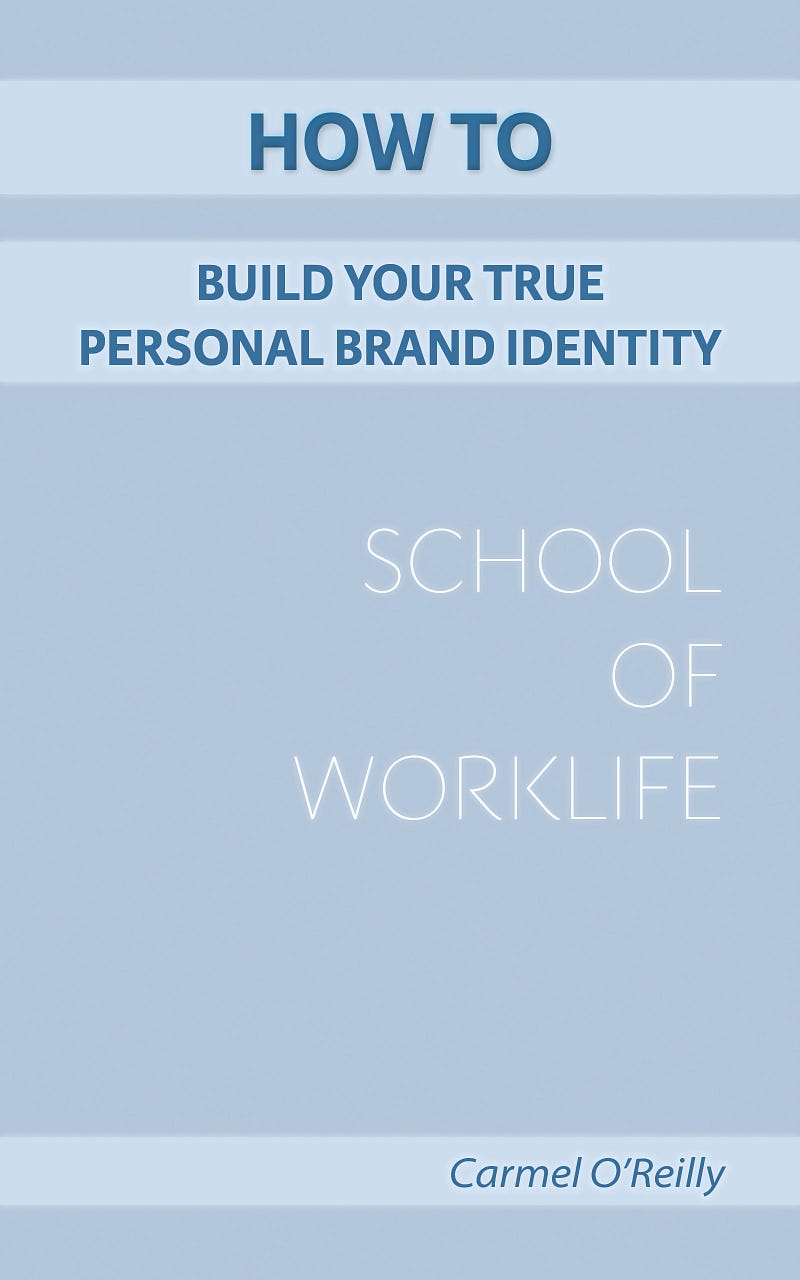I wanted to learn how to enable people to learn and grow through self-development. That was my growth and development plan.

“You can’t connect the dots looking forward. You can only connect them looking backwards. You have to trust that the dots will somehow connect in your future.” Steve Jobs. Those were Saoirse’s opening words at her university’s annual alumni day. But let’s hear Saoirse’s full address to understand her story:
A How a Side Hustle Can Supercharge Your Skill Set and Future Proof Your WorkLife Case Study:
Saoirse’s Alumni Address:
Sage Wisdom
“You can’t connect the dots looking forward. You can only connect them looking backwards. You have to trust that the dots will somehow connect in your future.” Steve Jobs.
In my earlier talk I shared how a side hustle saved my WorkLife and my well-being, and how I instinctively knew that sharing my experience would help other people.
I took the following approach to understand how I could do this:
- I evaluated what I enjoyed about both my work and side hustle;
- I considered learning I wanted to undertake — areas of my WorkLife in which I wanted to grow and develop;
- I thought about how I could combine skills from both to create something that was truly my own.
I’d begun my WorkLife as a freelance copy writer. When I had more work than I could handle, I outsourced it to fellow copy writers. This was reciprocated. This led me to founding a start-up business: a cooperative for freelance copy writers.
I enjoyed writing, I enjoyed bringing people together, I enjoyed working solo on smaller projects and I enjoyed collaborating on bigger projects.
I enjoyed the immediate and continuous sense of well-being and serenity I’d experienced by tidying my home. A weekend project which I soon became to think of as a side hustle because I felt it had greater scope. I enjoyed the enlightenment, inspiration and creativity that came to me through clarity in my thinking and from having a focused mind.
I wanted to learn how to enable people to learn and grow through self-development. That was my growth and development plan.
I asked myself: “How can I make a difference in people’s lives?” “What action will get me closer to the reality that I have just envisioned?”
The answer that came to me through reflection and self-feedback was that I could develop a mentoring programme for people who wanted to declutter their WorkLife.
I focused on people who had founded start-ups. After all, I knew their pain, so I knew there was value in teaching what I had learnt to other people, and I wanted to do something that made a difference for others. That was my marketing plan: to Market to a specific group based on a shared identity.
Book Wisdom
I re-read Give and Take by Adam Grant, the book that helped me when I was figuring out how to shift from freelancing to establishing a business that aligned with my values. The book enabled me to articulate what honouring my core values meant in this WorkLife transition. I wanted:
- To build a successful company from the collective energy, intelligence and contributions from all team members;
- To practice a win-win practice with our team and our clients, by treating everyone with respect, fairness and integrity, and expecting the same in return;
- To serve and support our community by developing relationships that make a positive difference in people’s lives by enabling continuous learning, development and growth.
For me this book holds the key to a more satisfying and productive WorkLife, better relationships and fairer profits. It’s helped me to play my part in creating a society in which people do better by being better. It provides an inspiring perspective on how to do better by being better.
I began by utilising my experience to teach what being a self-organiser is really like. I created a virtual declutter mentoring programme for people who wanted to take a DIY approach to organising their WorkLives — instructional videos and work sheets. I made my course accessible by charging only £19. I thought this was a good price point for adding value to the course while also making it available to more people.
Next, I developed a 4-week organisation mentorship programme: for people who wanted to establish a business in professional WorkLife decluttering. I put together short-term training packages, to educate people on how to handle their business from the initial start-up through to the developing stages of growth. I followed my principles of wanting to make the course valuable and accessible by charging only £79.
Finally, I contracted with a team to support high-end clients; people looking for onsite WorkLife professional organising. The cost for a 4-hour session is £299, which I outsource to my team. I take 20% commission from each job.
Words of Wisdom
In managing your own WorkLife learning, growth and development, ask yourself: “What do I want? and “What will make me more fulfilled?” Reflect on what comes up for you, then identity how you can make that happen, and from there develop your plan. Pay attention to what you discover along the way: I discovered I enjoyed empowering others rather than being on-site doing the physical work myself. This allowed me to adjust and adapt my plan.
Epilogue
You can view my earlier talk How a Side Hustle Saved My WorkLife and Well-Being on the university’s intranet to help you understand what led me to these simple steps of evaluating what I enjoyed about both my work and side hustle; considering the learning I wanted to undertake; the areas of my WorkLife in which I wanted to grow and develop; and thinking about how I could combine skills from both to create something that was truly my own. This had a significant and positive impact supercharging my skill set.
Each and every one of you can do the same. By taking responsibility for your own learning, growth and development, you can design your WorkLIfe transitions around investing in a diverse set of skills, and in so doing you can effectively future-proof your WorkLife. Thank you.
In a recent post I shared Saoirse’s story of How a Side Hustle Saved My WorkLife and Well Being.
Today’s featured book is: Give and Take by Adam Grant
How a Side Hustle Can Supercharge Your Skill Set and Effectively Future Proof Your WorkLife … is part of a series of people’s stories of how a side hustle allowed them to: utilise their skills beyond the scope of their industry; create opportunities outside of their main work; use the skills they already had to take the initiative to get things done; build confidence in a new skills set; create an additional income stream; make connections; practice authenticity; develop independence; spread risk, and much, much more.
WorkLife Book Wisdom Stories:
The intention of the stories I share is to inspire you through people’s stories of their WorkLife experiences. Through these stories, you will learn about people’s dreams and ambitions, along with the challenges, obstacles, failures and successes they encountered along the road of their WorkLife journey. And how they used the power of book wisdom to help them find the inspiration and guidance to navigate their path to live their WorkLife with passion, purpose and pride.
My hope is that these book wisdom stories will help you throughout the chapters of your WorkLife Story.
I believe stories are a powerful mechanism for teaching, a powerful medium to learn through, and a powerful way to communicate who you are and what you stand for.
If you enjoyed this, please hit the *Clap* 👏 button as many times as you wish.








